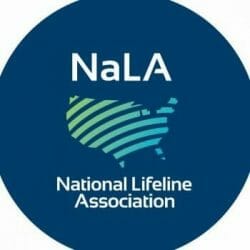
NaLA Comments on FCC Connected Care Pilot Program Notice of Inquiry
The National Lifeline Association (NaLA) filed a response to a recent Notice of Inquiry (NOI) regarding the Connected Care Pilot Program, a Federal Communications Commission (FCC) telehealth program that seeks to assist low-income Americans.
 FCC Promoting Telehealth for Low-Income Consumers
FCC Promoting Telehealth for Low-Income Consumers
The Connected Care Pilot Program is part of an FCC telehealth initiative and would seek “to improve health outcomes among low-income Americans through the use of expanded access to telehealth services.” The $100 million FCC proposal for a Connected Care Pilot Program received unanimous approval in August 2018.
In the NOI, the FCC acknowledges an increasing reliance on broadband-enabled telehealth services when providing high quality health care. The pilot would improve healthcare for low-income consumers by bringing connected care resources to low-income Americans with a wide range of health challenges, including cancer treatment, pediatric heart disease, high risk pregnancies, stroke treatment, and diabetes management.
FCC Seeks Comment on Connected Care Pilot Program NOI
In response to the NOI, NaLA expressed concerns in a September 10, 2018 filing. As an organization that has long viewed Lifeline as a tool to increase access to healthcare for low-income consumers, NaLA supports the purpose of the Connected Care Pilot Program, but expressed two main concerns:
-
Telehealth services provided by the program would not be offered to all low-income Americans who need them.
The NOI seeks comment on “limiting the participating health care providers’ use of the pilot program funding to Medicaid-eligible patients, as well as veterans who qualify based on income for cost-free health care benefits through the Department of Veterans Affairs (VA).”
NaLA believes strongly that this limitation would lead to many exclusions of the low-income demographic for whom the program was designed to serve. -
The Commission would restrict provider participation to “Facilities-based” ETCs (providers).
This restriction would further limit accessibility for low-income consumers who are in need of telehealth services by limiting the number of providers. The NOI suggests that such an approach would be consistent with the Lifeline program, proposing “that participants should be facilities-based … given that one of the goals of the pilot is to increase broadband deployment in unserved and underserved areas.”
NaLA opposes this point, noting that nearly 70 percent of low-income consumers within the Lifeline program are served by non-facilities based ETCs (wireless resellers). Additionally, NaLA adds that resellers “have a unique expertise in locating, enrolling and serving the same communities that the Connected Care Pilot Program seeks to serve, i.e., low-income consumers and veterans”.
In conclusion, NaLA respectfully requested that the Commission design any Connected Care Pilot Program consistent with these comments to most effectively and efficiently meet the program goals.
View Full Response to the Connected Care Pilot Program NOI
Read NaLA’s September 10 Comments to the FCC Notice of Inquiry here.

